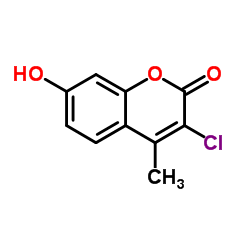Development of a simple and sensitive fluorimetric method for isolation of coumaphos-hydrolysing bacteria.
R L Harcourt, I Horne, T D Sutherland, B D Hammock, R J Russell, J G Oakeshott
Index: Lett. Appl. Microbiol. 34(4) , 263-8, (2002)
Full Text: HTML
Abstract
To develop a simple, rapid and sensitive fluorimetric assay to detect, isolate and characterize a soil bacterium capable of degrading the organophosphorus pesticide, coumaphos.A high throughput microtitre plate-based method was used to quantify coumaphos hydrolysis by the bacterium. The fluorescent hydrolysis product of coumaphos, chlorferon, was detected at levels as low as 10 nmol l(-1). Incorporation of coumaphos into agar plates allowed the rapid detection of coumaphos-hydrolysing bacteria when exposed to an excitation wavelength of approximately 340 nm. The coumaphos-hydrolysing enzyme could be visualized when bacterial cell extracts were separated on SDS-PAGE, incubated with coumaphos and exposed to an excitation source as above.This method is 100-fold more sensitive than the currently used spectrophotometric method for coumaphos.This is a unique and versatile tool to screen for bacteria possessing phosphotriesterase activity.
Related Compounds
| Structure | Name/CAS No. | Molecular Formula | Articles |
|---|---|---|---|
 |
3-CHLORO-7-HYDROXY-4-METHYLCOUMARIN
CAS:6174-86-3 |
C10H7ClO3 |
|
Evaluation of coumaphos exposure among tick eradication work...
2010-02-01 [J. Occup. Environ. Med. 52(2) , 131-6, (2010)] |
|
Biodegradation of coumaphos, chlorferon, and diethylthiophos...
2009-02-01 [Bioresour. Technol. 100(3) , 1138-42, (2009)] |
|
Management of the diffusion of 4-methylumbelliferone across ...
2010-09-01 [Electrophoresis 31(18) , 3121-8, (2010)] |
|
Determination of diffusion coefficients and diffusion charac...
2008-07-01 [Biotechnol. Bioeng. 100(4) , 698-706, (2008)] |
|
Studies on 3-chloro-4-methyl-(4-14C)-7-hydroxycoumarin in ra...
1981-01-01 [Adv. Exp. Med. Biol. 136 Pt A , 839-46, (1981)] |